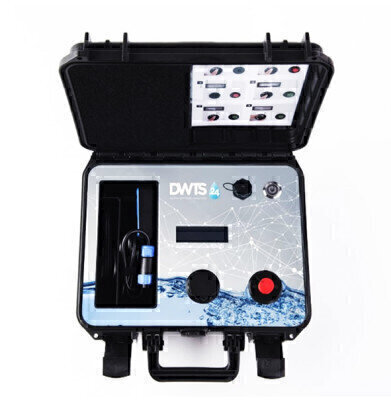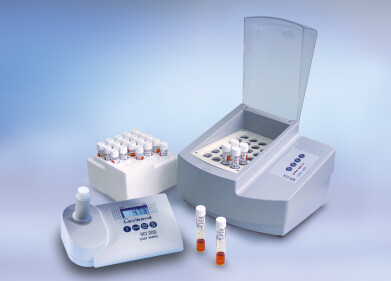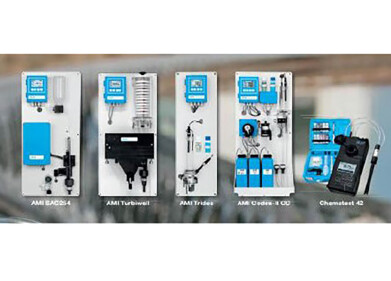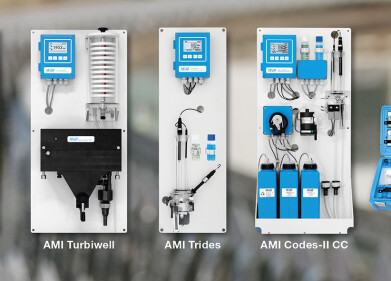Water Quality Monitoring
Is digitalisation the key to simple, cost-effective precision wastewater monitoring?
Jul 11 2022
Water monitoring is a vital componengt to ensuring drinking or industrial water quality. Converntional approaches can be costly, time-consuming and still will not always give the operator the precise data needed for the particular task at hand. Water is undoubtedly the most important commodity on the planet, without it, there would be no life on Earth; with pollution, climate change and all of the other pitfalls that beset our water supply, it is more crucial than ever to have precise and relaible water monitoring technology.
Providing clean water requires the best procedures, processes and technical systems for cleaning, monitoring, storage and distribution. The global water industry faces many of the same problems wherever they may be: finding enough trained personnel to carry out the manual tasks that monitoring the water supply involves as well as maintenance, calibration and all of the other time-consuming jobs is a difficulty encountered across the planet.
Accurate and timely wastewater monitoring is vital so that early and targeted actions can be carried out, thjis is especially the case in industrial applications where any problems can be solved as quickly and efficiently as possible. How quickly the operator reacts to a problem is crucial to avoid dangerous pollutants, germs, bacteria, getting re-introduced into the plant’s process or added to the water cycle.
Digital technologies are proving to offer the best solution to reducing the costs, time and labour associated with conventional water monitoring practices. At the moment, water monitoring is still mainly analogue and therefore labour-intensive and very time-consuming. The slow pace of analogue monitoring reduces efficiency and, as a result, the quality of the water itself. These old-fashioned processes also make it far harder to use the data to facilitate savings and raise efficiancy when key measuremewnt parameters take so long to enable optimisation of the process.
Finding out COD levels in a lab can take up to three hours, because the requisite thermal decomposition of the sample and chemical treatment are slow processes, delaying the time it takes to obtain vital data that could save, time, money and improve efficiency levels and water quality..
DWTS24, part of sense4elements GmbH, provide a global software platform teamed with state-of-the-art digital measurement technology for waste water treatment. DWTS24 has integrated IoT into their technology and are utilising big data applications to combine it with predictive services. It is obvious that in the future there will be significantly more measurement parameters recorded digitally to provide real time, operator-specific analyses and forecasts.
A new optical method determines levels of COD (chemical oxygen demand) and BOD5 (5 day biological oxygen demand) within one minute. This method took several years of research and development and now the water industry can have these crucial parameters measured rapidly and without the need for reagents or sample pre-treatment, in both the lab and onsite. Each measurement is sampled automatically 1,000 times within a matter of milliseconds to eliminate measurement errors increase measurement precision.
The instrument is extremely low-maintenance, user-friendly and self-explanatory to use. A cuvette made of optical plastic is used, this not only meets the stringent requirements of the measurement, but it can also be simply thrown out in the household waste when emptied. The saving on used COD cuvettes and reduction in travel and working times when operating multiple systems, means that the instrument returns its investment in just six months.By integrating additional water parameters, local weather data and upcoming tasks, water quality measurements can be better estimated and predicted.
DWTS24 reduces the need for time-consuming and expensive activities, from which their partners and customers benefit enormously. In the future, there could be a modular design for water treatment systems with standardised data interfaces, enabling an operator to choose between different instrumentation manufacturers and different software solution providers of for any given application to solve the current challanges at the operator‘s plant.
This approach will allow every supplier of analytical instrumtation or software to focus on their most suited products for the customer’s tasks while expanding them constantly and therefore reducing production costs. The focus would be on each different customer‘s specific, daily applications and challenges - with the application being the deciding factior over which product mix is most suitable for the end-user.
Digital Edition
AET 28.4 Oct/Nov 2024
November 2024
Gas Detection - Go from lagging to leading: why investment in gas detection makes sense Air Monitoring - Swirl and vortex meters will aid green hydrogen production - Beyond the Stack: Emi...
View all digital editions
Events
Jan 12 2025 Abu Dhabi, UAE
Jan 14 2025 Abu Dhabi, UAE
Jan 20 2025 San Diego, CA, USA
Carrefour des Gestions Locales de L'eau
Jan 22 2025 Rennes, France
Safety, Health & Wellbeing LIVE
Jan 22 2025 Manchester, UK



















